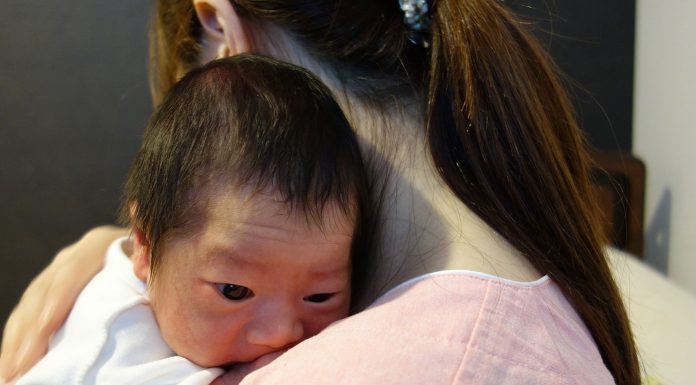Known as “the flu”, influenza is a nasty, infectious disease caused by a virus that can hit both the vulnerable and the healthy hard. It sometimes kills too.
There is little argument about this.
The seasonal influenza vaccine is safe and is science’s imperfect but best method to date for protecting people from the fast evolving virus.
The above statement would also prompt little argument from the New Zealand Nurses Organisation; virologist
Dr Lance Jennings; Canadian infection control physician Dr Michael Gardam; or district health board employers.
Nor is there dissent from these parties over wanting as many healthcare workers as possible to receive a free seasonal flu vaccination in order to reduce the risk of getting or giving the flu to their vulnerable patients.
However, when it comes to the methods employers use to increase the uptake of flu vaccinations in nurses and healthcare workers, dissent abounds.
This winter was the first in which a DHB actively enforced a Canadian-style ‘vaccinate or mask’ (VOM) policy for the flu season, with non-vaccinated staff required to wear a mask when in clinical areas.
The result was a steep upsurge in vaccinated nurses at Waikato DHB, from 52 per cent last year to 81 per cent in 2015. Across the island, at Tairawhiti DHB in Gisborne, there was no VOM policy but the vaccinated nurse rate topped 83 per cent – a record for the board, which two years ago also had nurse vaccination rates languishing around the 50 per cent rate.
Both boards worked hard to make vaccination readily available to their staff members. One board also enforced mask wearing, suspended three staff members and made headlines that garnered both popular support and a union backlash.
Getting the message across
Dr Leonie Walker is pro-vaccination. In fact, the New Zealand Nurses Organisation researcher, whose ‘distant’ PhD was in immunology, went out of her way this flu season to get a quadrivalent (four strain) vaccine rather than the more readily available trivalent flu shot.
NZNO is also very much pro-vaccination, she says. While it recognises that the seasonal flu vaccination is “at best” about 60 per cent effective on average each year, this still remains the best protection on offer for nurses and their patients.
But NZNO does object to what it sees as vaccination by compulsion, be it mandatory vaccination or compulsion ‘masked’ in the form of VOM policies. “I think the mask wearing is a complete red herring,” says Walker. “It’s being used as pure leverage to bully people into getting vaccinated and that doesn’t strike me as a sensible approach.”
Earlier this year the National Bipartite Action Group (NBAG) released guidelines for DHB vaccination policies that endorsed vaccination as the best protection available against influenza.
The joint guidelines were negotiated by unions and DHBs in the wake of conflict over another board’s policy, and set a new target of more than 85 per cent of staff receiving a flu shot each year. The parties also agreed that “a positive health message is more effective than negative, consequential or threatening messaging or activity” when promoting vaccination. The NZNO’s Infection Prevention and Control Nurses College has not taken a stand on VOM policies and chair Robyn Boyne says its members have a range of differing opinions. But the pro-vaccination body does support the NBAG emphasis on promoting a positive health message.
Sue Hayward, director of nursing at Waikato, is also pro-vaccination and she believes her DHB’s policy is in line with the spirit of NBAG.
In written responses to Nursing Review questions, she says the right of the patient to be protected from vaccine-preventable communicable diseases is an “absolute” that healthcare providers should accept and meet. For her, the onus “falls on us as nurses to employ all known procedures and processes, based on evidence and research, to uphold that standard”.
Hayward supports a VOM policy as she believes unvaccinated staff wearing a mask in a patient area provides the next-best protection to their patients; and it is in line with NBAG as it couldn’t be “compellingly argued that (our) policy implicitly required or coerced individuals to get vaccinated”.
Hayward also believes positive health messages and education alone are not enough as overseas research and New Zealand experience had established “it is difficult to achieve and consistently maintain high levels of vaccination amongst healthcare workers without either compulsion or policies such as ‘vaccinate or mask’”.
Statistics from the United States Government’s Centers for Disease Control and Prevention (CDC) indicate that even at US hospitals where flu vaccination is mandatory, the vaccination rate is about 85 per cent at the start of the flu season and around 96.5 per cent by the end.
New Zealand’s NBAG guidelines set a target of annually vaccinating more than 85 per cent of not only all DHB staff but also DHB contractors and regular visitors. Tairawhiti this year became the first DHB to exceed the target by vaccinating 86 per cent of its staff. Large DHBs like Canterbury and Auckland also reached 75 per cent staff vaccination last year without resorting to a VOM policy.
There were other DHBs though, large and small, across the country which last year struggled to get half of their staff vaccinated and three DHBs where there were far more nurses unvaccinated than vaccinated.
This year NBAG unions and employers agreed to agree that the seasonal flu vaccine provides the best protection currently available against potentially deadly influenza. So what is the best way to reach the mutually agreed target of 85 per cent of DHB staff vaccinated nationwide?
Thumbs down by expert
Dr Michael Gardam would ask another question – is the science there to justify requiring unvaccinated staff to wear masks?
The Canadian infection control physician has raised eyebrows and some ire amongst his peers by taking an open stand against ‘mask’ policies.
Gardam is a strong proponent of vaccination in general and gets his flu shot every Canadian fall but believes the science falls short of justifying a ‘vaccinate or mask’ approach for those who decline the flu shot – even if they decline for reasons that have little or nothing to do with good science.
Requiring reluctant staff to wear masks all flu season, he argues, just gives ammunition to an already virulent anti-vaccination movement in return for “negligible impact” on patient safety. He believes health providers should encourage healthcare workers to take up the influenza vaccination but save their battles for vaccine campaigns with more impact and scientific clout than those used to justify VOM policies in his native Canada.
Gardam, the director of infection prevention and control at Toronto’s University Health Network and an associate professor of medicine at the University of Toronto, presented on the science backing his stand on VOM policies at the recent Infection Prevention and Control Nurses College NZNO conference in Napier.
Canada is where British Columbia’s Fraser Health Authority implemented a VOM policy in 2012–2013 that prompted an unsuccessful legal challenge from local unions.
Gardam was subpoenaed to give evidence in a legal challenge by the Ontario Nurses Association against a VOM policy implemented over the last two northern hemisphere winters at a Toronto hospital. That lengthy arbitration case did not set out to “challenge the desirability of influenza vaccination for healthcare workers (HCWs)” but to weigh up the scientific evidence behind the hospital’s VOM policy and had expert witnesses from both sides of the VOM divide interpreting the research literature on the disease burden posed and faced by healthcare workers, on asymptomatic transmission of viruses, and whether HCWs wearing masks would reduce the nosocomial transmission of influenza.
In a recently released decision the arbitrator decided that the hospital’s VOM policy was unreasonable, was introduced to drive up vaccination rates, and breached the employment agreement right for nurses to refuse any required vaccination.
“If the mask evidence were as supportive as claimed, it would suggest that vaccinated HCWs should also wear masks, given the limited efficacy of the vaccine even in relatively ‘good’ years,” the arbitrator added near the end of the 136-page ruling. (The arbitration ruling can be found at www.ona.org/news_details/ONA_wins_landmark_influenza_20150910.html.)
Save your battles
“The flu shot is a one-trick pony,” argues Gardam, who advocates not putting all your infection control eggs in one basket.
Evidence indicates the seasonal flu vaccine is on average about 60 per cent effective each year but Gardam points out that influenza causes only a minority of influenza-like illnesses that hit communities and hospitalises patients every winter. He also argues nosocomial influenza infections are rare, the studies looking at the impact of vaccinating HCW are flawed, and a particularly fast mutating virus meant the vaccine was completely ineffective against the dominant H3N2 season strain last Canadian winter, but still only unvaccinated staff were required to wear masks.
The impact of the flu vaccine, he argues, is therefore modest – still enough for him to warrant having it every year but too modest, he believes, for policy makers to justify emotive rhetoric and estranging the minority of anti-vaccination staff by enforcing mask policies.
He sees the ethics of the influenza vaccine issue as more grey than black and white and, in influenza’s case, would put equal or greater ethical policy emphasis on having good hand hygiene, avoiding work when nurses clearly have influenza-like illness symptoms, and wearing a mask if they must attend or visit work when ill.
Gardam still encourages nurses to have the annual flu shot but thinks it is more ethically imperative, for instance, to make the MMR vaccine mandatory for healthcare workers.
“Because the evidence is so overwhelming that the MMR vaccine works … I fully support that in the same way I support mandatory Hepatitis B vaccination for healthcare workers so they are not exposed to Hep B in the workplace. I have no problems with pushing these as the vaccines are so good, the diseases are so bad and it’s so obvious (these) work.”
He says the same cannot be said for the effectiveness of the seasonal flu vaccine and believes employers should save the rhetoric and hardline strategies for vaccines that are proven to make a marked difference.
Still the best shot we’ve got
Canterbury clinical virologist Dr Lance Jennings would like to see 100 per cent of healthcare workers vaccinated against the flu. He believes the discussion simply needs to come back to first principles, including that healthcare workers should ”do no harm”.
“Yes I agree that there are a lot of gaps in our knowledge about influenza,” says the spokesman for the National Influenza Specialist Group.
“This is why I keep coming back to a common sense approach: that influenza is a serious illness and we know people die of it. And we know that vaccination is our best strategy for controlling the more severe consequences of influenza infection…
“Ideally everyone who gets admitted to hospital should have a seasonal influenza vaccine but of course they don’t. So the only way we can contribute to their protection is by ensuring our staff have an influenza vaccine to lessen the possibility of transmission.”
Jennings was an advisor to the NBAG vaccination guidelines working party that agreed to more than 85 per cent as an annual target but ideally he’d like to see 100 per cent of healthcare workers vaccinated, and not stop there.
“I think nationally a universal vaccination strategy is what we need to aim for as we’re a small country and we may be able to modify the spread of influenza to the benefit of everyone, rather than our approaches at the present time where we are trying to protect those at greatest risk.” These include not only the elderly but the very young as he points to the fact that SHIVERS (Southern Hemisphere Influenza and Vaccine Effectiveness Research and Surveillance project) data shows that children under five years of age have the highest hospitalisation rate for influenza.
Does that mean he’d like to see mandatory seasonal flu vaccination for HCWs? Well, yes and no. He is definitely not averse to the VOM approach of having the majority of HCWs receiving the vaccine and those HCWs at the ‘coalface’ not vaccinated, wearing masks.
“So whether you call it a mandatory vaccination approach or whatever, it’s something that we should want to achieve with appropriate consultation – because that’s how we do things in
New Zealand – and appropriate education.”
He says the NBAG guidelines clearly suggest there needs to be a dialogue and consultation over vaccination. “And, as we’ve seen in Waikato, if you don’t have appropriate leadership, and all your staff on board and prepared to accept that they have to (otherwise) wear masks when in frontline situations, then you get a kick back.” This ‘kick back’ can lead to headlines and debate that can defeat the purpose, so Jennings has some empathy with Gardam on that point at least.
But not with what he calls Gardam’s approach of ‘cherry-picking’ research that supports the Canadian physician’s anti-VOM stand. “Why go to great lengths to focus on things we have poor knowledge of and use it as a justification for not going down that track,” argues Jennings.
He acknowledges there are gaps in the knowledge about influenza, including a lack of double blind, randomised controlled trials in areas like nosocomial and asymptomatic transmission of influenza, but he says there are good reasons for this. For a start, the numbers of influenza infections are small – so to carry out a randomised-controlled trial you would need to enrol a very large number of patients – and more importantly there are major ethical issues with trials involving a potentially fatal infectious disease like influenza. “That is why we rely on observational studies for most of the data.”
The science does show patients are at risk of nosocomial infection once admitted to hospital – be it from HCWs, visitors or fellow patients – and some studies show that there is up to 50 per cent mortality following nosocomial influenza infection, says Jennings.
And once again, he argues, you should bring it back to first principles – ethically HCW, like nurses, should do everything they can to protect their patients. The seasonal influenza vaccine is safe and can reduce the risk of influenza infection and mortality, so why not expect HCWs to get vaccinated each year?
“We know that, even with vaccination, no one (infection control) initiative is perfect so we need multiple strategies to lessen the risk of transmission of virus to those at greatest risk in a healthcare setting,” says Jennings. “This includes good hand hygiene and a culture change, led from the top to encourage healthcare workers with flu-like respiratory symptoms to stay away from work.”
So what does he think of Gardam’s argument that you should choose your battles and save your fights for more scientifically robust and proven vaccine programmes than seasonal influenza?
“But it is something you can achieve, so why argue against it when it is achievable?” replies Jennings. “And mandatory vaccination has been shown to be achievable in other settings… though we may have to use another word or another approach here.”
He says the best approach is to ensure that your population is well educated so you can move towards a situation where you have nearly 100 per cent coverage.
Meanwhile Michelle Kapinga, the chair of the National Influenza Specialist Group and manager of the National Influenza Programme, shared a presentation in late May entitled ‘Mandatory Healthcare Worker “Vaccination or Mask” Policy – the British Columbia Experience and Insights for New Zealand’during a regular immunisation professional development day.
The British Columbia evidence was drawn largely from a presentation given by the former chief medical officer of Fraser Health Authority, Paul Van Buynder, who is now a public health medical officer on the Gold Coast. He reported that though the first year of campaign “involved pain” it had strong media and public support; the cost of masks was small (changed when wet); the reduced absenteeism outweighed costs; and by the second flu season it was “routine and just happened”.
Van Buynder was chief author (fellow ex-Fraser employee and now Waikato DHB chief executive Nigel Murray was also an author) of a journal article this year reporting that Fraser’s jump in staff flu vaccination rates to 77 per cent that first year (86 per cent of full-timers) had reduced sick leave over the flu season and saved the authority substantial money.
More winters of discontent?
To return now to where we began: the flu is nasty. It can hit hard and sometimes kill. The seasonal flu vaccine is still the best protection on offer to reduce the risk of nurses’ infecting vulnerable patients.
Whether the next flu season is a more widespread winter of discontent may depend on how convinced DHBs are that getting closer to that 85 per cent threshold may be best met by goodwill and lollipops or the disincentive of wearing a mask.
Waikato DHB’s Vaccinate or Mask (VOM) Policy
Healthcare workers who are unable to establish that they have received the current seasonal influenza vaccination will be required to wear appropriate personal protective equipment (PPE) such as surgical or procedural face masks during the declared influenza season while undertaking clinical duties or being present in a clinical area.
Case study: Tairawhiti DHB
One of the most isolated of the country’s 20 DHBs, the East Coast’s Tairawhiti DHB, tops the league table for influenza vaccination uptake by its staff.
With no pressure or incentive beyond a lollipop – and the biggest change being ease of access in a focused week-long campaign – the DHB jumped its staff vaccination rate from just above 50 per cent in 2012 to 75 per cent in 2013 and 86 per cent of its 739 staff in this flu season just gone. (This doesn’t include staff that were vaccinated via their local general practice).
Occupational health nurse Cathy Brown is modest about Tairawhiti’s jump to the top of the league table. She stepped into her roll in 2012 and quickly realised in the first flu season that the established policy of expecting staff to come to occupational health just didn’t work.
So the next year she took the vaccines to them and launched the board’s first Flu Week publicising when she and her colleague would be available at each department across the board’s two sites in Gisborne. The uptake soared, with some hesitant vaccinatees encouraged by seeing their colleagues rolling up their sleeves, and catch-up clinics near the staff cafeteria capturing those who may otherwise have missed out. Brown believes the DHB offering the option of the microneedle Intanza vaccine one year helped some needle-phobic staff to overcome their fears of an annual flu shot.
The education campaign included sharing staff’s own flu stories in the DHB’s newsletter The Nerve, which this year featured the story of the new communication manager who had declined the flu vaccine the previous year.
“She was like ‘no, no, no I don’t want to have that’. I explained the benefits to her and left it like that,” recalls Brown. “And then she got quite sick with the flu. So she was in front of the queue this year and put her story in the newsletter, which I think encouraged a few people.”
Also this season there had been extra input from unions encouraging members to get vaccinated. “I think that’s quite a helpful support.”
Brown thinks the late arrival of the vaccine this season also focused interest as the weather became chillier and people started to think that winter and flu were just around the corner. She also sent a second vaccination team to work during Flu Week, which meant “it was very difficult to avoid us”. A little healthy rivalry between doctors and nurses to see who was beating who in the vaccination uptake stakes – updated regularly on a prominent chart – played a part too. (Nurses edged ahead with 83 per cent uptake, compared with the doctors at
82 per cent).
Does Brown think she can top 86 per cent? “It’s always possible,” she says.
Case study: Auckland individualised approach
Individual emails to non-vaccinated staff has helped Auckland DHB for the first time see 80 per cent of its nurses vaccinated – nearly double the rate of three years before.
Adoption of the board’s Staff Seasonal Influenza Vaccination Guideline last year has helped increase the overall uptake of its nearly 10,000 staff from 63 per cent in 2013 to 76 per cent this year.
Christine Sieczkowski, the nurse manager of Auckland DHB’s infection prevention and control service, says it first set the goal of 80 per cent in 2014 along with its new guideline.
That guideline has four phases:
- Phase One: Offer vaccination through several fixed venues for at least two weeks (along with in-team vaccinators vaccinating colleagues). End of April to early May.
- Phase Two: Letter is sent out to all non-vaccinated staff encouraging them to be vaccinated. The fixed venue continues for an additional week, along with the in-team vaccinators, plus introduced mobile vaccinators who staff can ring and request to come to their area. Mid-May.
- Phase Three: Email is sent out to all non-DHB vaccinated clinical staff, including an “opt-out survey”. Survey asks staff whether they have received vaccination at their general practice, and if they have opted not to have the vaccine they are asked why. In-team and mobile vaccinators continue. Third week of June.
- Phase Four: Fliers are sent out to all non-vaccinated staff reminding them that the vaccine is still available. Third week of July.
Sieczkowski says 2014 was the first time the DHB undertook such a structured campaign and a key element was having senior clinical leaders out amongst staff spreading the same consistent message of ‘protect, don’t infect’.
While the campaign identified and targeted non-vaccinated clinical staff with letters and emails, it stopped several steps short of requiring them to wear masks.
“The message went out that, obviously, we would strongly encourage the wearing of masks in non-vaccinated clinical staff but it was left more as a matter of professional judgement,” says Sieczkowski. “Really relying on staff conscience to do the right thing, particularly when caring for vulnerable patients like the young in Starship; the frail elderly; pregnant women; or the immune compromised.”
The result was that some non-vaccinated staff did wear masks “but it definitely wasn’t a ‘you must’ it was a ‘you should’,” says Sieczkowski. “As a nurse, I do think we have a professional obligation to keep both patients and ourselves safe at work, like keeping ourselves well, wearing the right protective clothing at the right time, and hand hygiene etc. Vaccinations are just part of that picture.”
She is comfortable that the new structured approach is a happy middle ground and it received very little negative feedback from people sent the phase three survey. People said they had chosen not to have the vaccine for a variety of different reasons and 313 staff members said they had received the vaccine at their GPs (they were included in the final staff total).
“We were just trying to get a handle on why people weren’t taking up the offer of a free flu vaccination,” says Sieczkowski. “And get any clues about how we could improve the campaign next time.”
Case study: Waikato
Staff influenza vaccination rates jumped 28 per cent in a single year at Waikato DHB after adopting a ‘vaccinate or mask’ policy. The policy also led to three staff members being suspended, one of whom lost their job.
Waikato’s chief executive Nigel Murray brought the VOM policy with him from his old employer, British Columbia’s Fraser Health Authority where the policy successfully withstood a union legal challenge. (see policy statement p.17)
The New Zealand Nurses Organisation, which says it is pro-vaccination but anti-compulsion, challenged the Waikato policy’s consultation process leading to mediation and an agreement for a joint working party, including other DHB unions, to fully consult on and review the policy before the next flu season.
Sue Hayward, Waikato’s director of nursing and midwifery, said in a written response to Nursing Review that, overall, staff “recognised the intent of the policy to provide a safer clinical environment”, with 81 per cent making the choice to be vaccinated through the DHB programme (a further 2 per cent were vaccinated elsewhere). This was a marked increase from 53 per cent last year and nurse vaccination rates had also jumped from
52.2 per cent to 81 per cent.
She also believes the VOM policy meets the spirit of the NBAG guidelines as “just fewer than one in five employees elected to wear masks rather than get vaccinated; as such we do not believe that it can be compellingly argued that policy implicitly required or coerced individuals to get vaccinated.” Also VOM was only one aspect of the DHB’s policy and she believes having 114 vaccinators based in wards and clinical areas plus weekly prizes were also key components of its success.
Lesley Harry, industrial advisor for NZNO, says there are questions around whether all members felt they had a choice.
“We’ve had feedback from people who really felt coerced to be vaccinated rather than exercise their free choice and that’s not okay. Coercion is not the solution.”
She says NZNO supported three nurse members – two suspended and one threatened with suspension – when they refused to wear masks. (The terminated staff member is understood not to be a nurse or a union member.) NZNO also heard from the regularly vaccinated, who said the policy had impacted on morale.
“So generally it was a pretty unhappy situation judging by the amount of calls and the communication that we had from our members at Waikato DHB.”
Hayward said the motivation for Waikato’s VOM policy was that unvaccinated staff were a higher risk to patients, colleagues and families and the DHB had an obligation to its patients.
“The right of the patient to be protected from vaccine-prevented communicable diseases as well as preventable contamination is an absolute that a healthcare provider should accept and meet,» said Hayward.
She added that overseas research and the practices in New Zealand had established “it is difficult to achieve and consistently maintain high levels of vaccination amongst healthcare workers without either compulsion or policies such as vaccinate or mask”. Managers and clinical leaders at Waikato had been responsible for requiring unvaccinated staff to wear masks in clinical areas and ensuring masks were available. Hayward says some have found the actual wearing of the mask uncomfortable; however, the majority of nurses had shown a high degree of professionalism and worn the mask as required.
Harry says during the upcoming review NZNO will not be arguing the efficacy of influenza vaccination but will attempt to persuade the DHB “that there’s more ways than one to skin a cat” and to take a more positive campaign approach to meeting the 85 per cent target.
“If the DHB thinks that this (VOM) is going to be the process each year then inevitably they are going to come across resistance and unhappiness about it.”






















